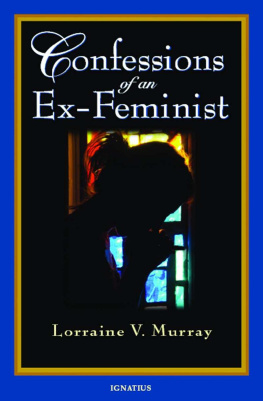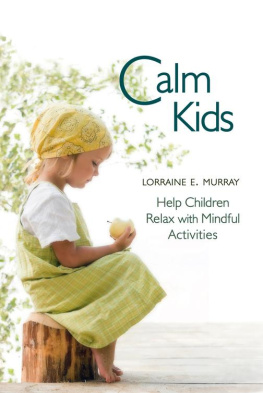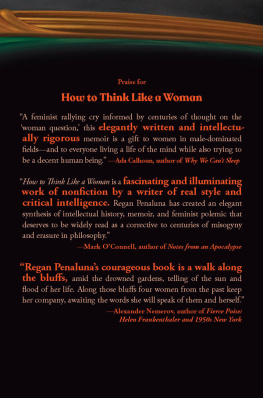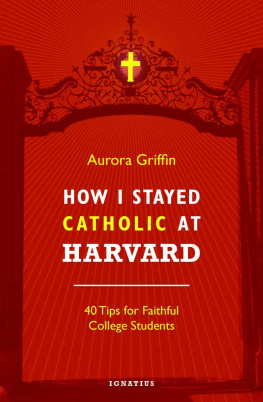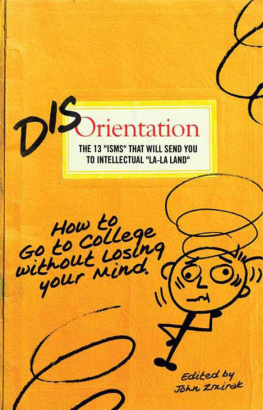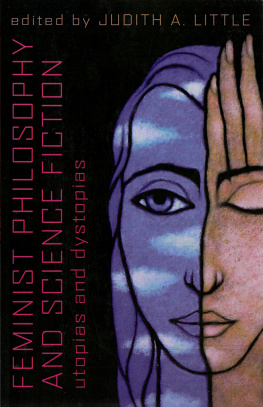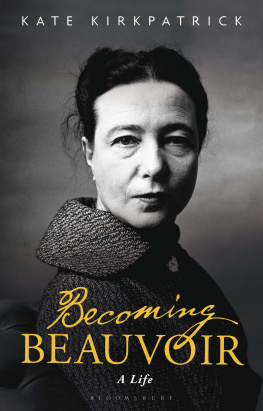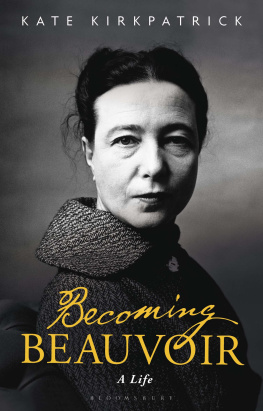Confessions of an Ex-Feminist
LORRAINE V. MURRAY
CONFESSIONS OF AN
EX-FEMINIST
IGNATIUS PRESS SAN FRANCISCO
Cover photograph Peter Brutsch
Cover design by Riz Boncan Marsella
Copyright 2008 by Lorraine V. Murray
All rights reserved
ISBN 978-1-58617-225-1
Library of Congress Control Number 2007928634
Printed in the United States of America
To Monsignor Richard Lopez,
who led me, ever so gently, to the light
Why should not I love thee,
Jesu, so much in love with me?
Gerard Manley Hopkins
O Deus, ego amo te
CONTENTS
ACKNOWLEDGMENTS
This book is a dream that has been taking shape in my head for years, and it would not have come to fruition without encouragement from many people. I am deeply grateful to my husband, Jef, who provides our household with delectable meals and homemade wine and helps banish the demons of doubt that often assail me. He read an early draft of this book, made suggestions, and encouraged me to complete it. I also thank the people who frequently express enthusiasm about my writing projects: my mother-in-law, Lou Craig; my sister, Rosemary Mende; my cousin, Julie Anderson; my aunt, Rita Pope; my childhood buddy, Alice Aznar; and my colleagues at the Pitts Theology Library, especially M. Patrick Graham, John Weaver, and Fesseha Nega. Two other people took an early look at the manuscript and encouraged me: Monsignor Richard Lopez, who is my spiritual director, and Joseph Pearce, a friend, who is the editor of the St. Austin Review . Joseph was kind enough to shepherd the book to Ignatius Press, where the editors have added the finishing touches. My nephew, Rick Mende, and my nieces, Jennifer Metcalf and Christina Edgar, are always cheering me on, and I thank God for their presence in my life. And for all the lunches, conversations, hugs, and encouragement, a big thank-you to my best friend, Pam Mottram!
Please note that some names in the text have been changed in order to protect individuals privacy.
INTRODUCTION
Warning: This is a dangerous book. It may make some feminists see red, and some atheists think black thoughts. It may rile up readers who think all religions are equally valid and cause consternation in the hearts of some Catholics, who think they can pick and choose among the dogmas of their faith.
It is a book that had to be written, although I will admit that I resisted the impulse for a long while. Whenever I would think, I must tell the tale of my conversion experience, I would realize that this entailed divulging what came before, which included the years when I waged a vendetta against Catholicism. But it also meant describing my childhood as a Catholic schoolgirl, when one of my biggest problems was grappling with what were called impure thoughts.
I wondered if it was presumptuous to believe that the details of my life were special enough to record for others to read. But just as I was thinking along these lines, a student would come by my desk at the theology library where I work, and we would somehow broach the topic of conversion. And if I were to mention my return to Catholicism after more than twenty years away, a predictable thing would happen.
What made you come back? the student would ask. And I would fumble around, because the question is so much like asking a person who has been married twenty-five years, What made you fall in love? How could I explain, in a matter of a few minutes, how and why I had come back to the religion that I had so thoroughly and passionately despised for so many years?
This dilemma sent me to my computer to try to hammer out a few lines about my return to Catholicism. And, sure enough, as I tried to explain why I came back, I had to tell why I had left, which meant telling how I arrived there in the first place. There was just no getting around it: I was going to have to tell the whole tale.
Now, if you are fortunate enough to have led a sunny life with myriad memories of joyful picnics and sweet meanderings along the seashore, writing your life story might be a happy endeavor to undertake. For me, though, the project has meant reliving bitter moments, such as a childhood crippled by my fathers gambling addiction, and my thoroughly wild years in college, when I lived in an apartment complex aptly nicknamed Sin City.
Some readers, I fear, may be scandalized by this book, when they realize how many years I went my merry way as a sinner, dabbling in sex, drugs, and rock and roll, and launching my own personal war against God. Other readers may glimpse themselves in these pages and think, Oh, dear, I have been through that , just as she has! This all sounds familiar, and I thought I was the only one!
The belief that I was the only one plagued me for years. There were times when I suspected that other people had gone to college to write term papers, study for exams, graduate, and get married, all the while obeying social conventions, saying their prayers, and paying their bills.
Then there was me. It is true that I went to college to get a series of degrees, but I did so by partying like a fiend and touting the virtues of nihilism. The T-shirt for my life would have echoed the words of Dostoyevsky: If God is dead, then anything is possible. Of course, college days often are connected with rebellion, but my style of rebellion lasted over twenty years, and as a philosophy teacher, I was able to tempt others to join me.
I hope this book finds its way into the hands of others who were, or are, as nihilistic as I was, so they will know they are not alone and may realize that, no matter how deep the hole they have dug, there is always an escape route.
C. S. Lewis once warned that an atheist could not be too careful about what he reads, because Bibles are left open all over the place, and unbelievers would have to guard themselves against the danger of taking a glimpse. I hope that many people, atheists as well as believers, will take more than a glimpse at this book and know that they were sufficiently warned.
Fall from Grace
When my mother showed up in labor at Saint Josephs Hospital, the sisters urged her to keep her legs crossed. They were afraid she would have the baby before the doctor arrived. Although Dr. Ralph Bellantonis name appears in my baby book as the one officially presiding over the event, my mother always suspected that the Sisters of Charity had delivered me.
I made my entrance into the world at 8:30 P.M. on August 29, 1947, which was the day commemorating the beheading of poor Saint John the Baptist. Born in Yonkers, I went home to a humble townhouse in Elmhurst, with a housewife named Grace and a taxi-cab driver, Gaspar Viscardi, known as Tom.
I recall little of the very early years of my life. There are teeny images and whispers here and there in my memory bank but no coherent thread of events. One mental snapshot has me standing outside in the yard behind our two-story house, playing with my sister, Rosemary. When we were thirsty, we called upstairs to my mother, and she would tie a string around a plastic cup of water and slowly send it down to us. We were in the yard playing without adult supervision, but this was typical of the time: Adults figured that if there were no screams of anger or agony, the children were safe.
At our Elmhurst townhouse, located at 5754 Eightieth Street, my mother would sometimes place me in a playpen on the front lawn, where she could watch me from the window while doing housework. According to an oft-told family legend, people walking by would stop to admire the sweet, chubby-cheeked baby. It was at that point that I grabbed the bars of my playpen, shot them a stern look, and uttered one of my favorite first words: DOPE!
I have little doubt that I learned that word from my sister, who was two years older than I. Family lore has it that when my mother brought me home from the hospital, wrapped in a cotton blanket, she bent down to show the new baby to Rosemary, and a tiny hand dangled from the blanket at a tempting angle before my sisters face. She took a nip, I screamed, and thus was born a contentious relationship that lasted throughout our childhood.
Next page
